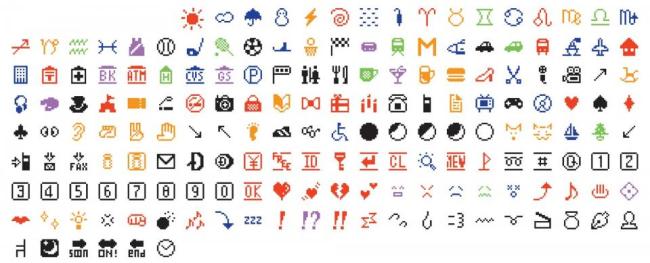Some are flashy, some move, and some even make sounds. Emoticons have become an inseparable means of delivering feelings and messages for mobile messenger and online users worldwide.
Some 92 percent of the world’s online community are estimated to use emoticons, increasingly known by their Japanese name emoji, with over 6 billion of them sent every day, according to the 2015 Emoji Report released by marketing platform Emogi.
They have developed alongside wireless telecommunications devices.
Some 92 percent of the world’s online community are estimated to use emoticons, increasingly known by their Japanese name emoji, with over 6 billion of them sent every day, according to the 2015 Emoji Report released by marketing platform Emogi.
They have developed alongside wireless telecommunications devices.

Emoji in the form of pictures that millennials are familiar with were created in the late 90s in Tokyo, Japan, according to Vyvyan Evans, an expert on language and digital communication, who is also the author of the novel “The Emoji Code” published last month.
The first batch of emoji consisting of 176 simple images were developed by a Japanese software engineer Shigetaka Kurita of NTT Docomo, a Japan-based cellphone company, in 1999.
The word emoji was also created in the same year in Japan, as a combination of Japanese words “image” and “character.”
The origin of emoticons in South Korea could also be said to date back to the 90s when people used to leave incoming messages on pagers in numbers.
The number 1004, for instance, reads the same as the Korean for “angel,” and 82 sounds like “quick.”
As the pager boom gave way to cellphones in the early 2000s, messages in numbers changed to emoticons to effectively deliver text messages within a limited capacity of 80 bytes.
Emoticon, often used synonymously with emoji here, is a compound word of emotion and icon, made up with typographical marks, such as the smiley face :-) and crying face :’(.
The emoji frenzy further skyrocketed with the introduction of the smartphone.
“Most messages on social media and mobile messengers are exchanged for personal purposes. So emoticons are an effective way of letting the receiver know that the sender means no harm,” said professor Han Dong-sub, a professor of Media and Communication at Seoul-based Hanyang University.
“Even when someone sends an emoticon with a mad-look, it does not mean that the sender is mad. No emoticon conveys a mad or threatening emotion.”
According to Kakao, which runs Korea’s most-used mobile messenger Kakao Talk, some 2 billion emoticons are sent on its messenger service every month on average, with 10 million users using them daily.
Emojis became so ubiquitous globally that the Oxford English Dictionary for the first time chose a pictograph as the word of the year in 2015.
An emoji named the Face with Tears of Joy was the winner for the year, on grounds that it best represented “the ethos, mood, and preoccupations of 2015,” Oxford Dictionaries said.
By Kim Bo-gyung (lisakim425@heraldcorp.com)
-
Articles by Korea Herald







![[Graphic News] More Koreans say they plan long-distance trips this year](http://res.heraldm.com/phpwas/restmb_idxmake.php?idx=644&simg=/content/image/2024/04/17/20240417050828_0.gif&u=)
![[KH Explains] Hyundai's full hybrid edge to pay off amid slow transition to pure EVs](http://res.heraldm.com/phpwas/restmb_idxmake.php?idx=644&simg=/content/image/2024/04/18/20240418050645_0.jpg&u=20240419100350)






![[From the Scene] Monks, Buddhists hail return of remains of Buddhas](http://res.heraldm.com/phpwas/restmb_idxmake.php?idx=652&simg=/content/image/2024/04/19/20240419050617_0.jpg&u=20240419175937)

![[KH Explains] Hyundai's full hybrid edge to pay off amid slow transition to pure EVs](http://res.heraldm.com/phpwas/restmb_idxmake.php?idx=652&simg=/content/image/2024/04/18/20240418050645_0.jpg&u=20240419100350)

![[Today’s K-pop] Illit drops debut single remix](http://res.heraldm.com/phpwas/restmb_idxmake.php?idx=642&simg=/content/image/2024/04/19/20240419050612_0.jpg&u=)